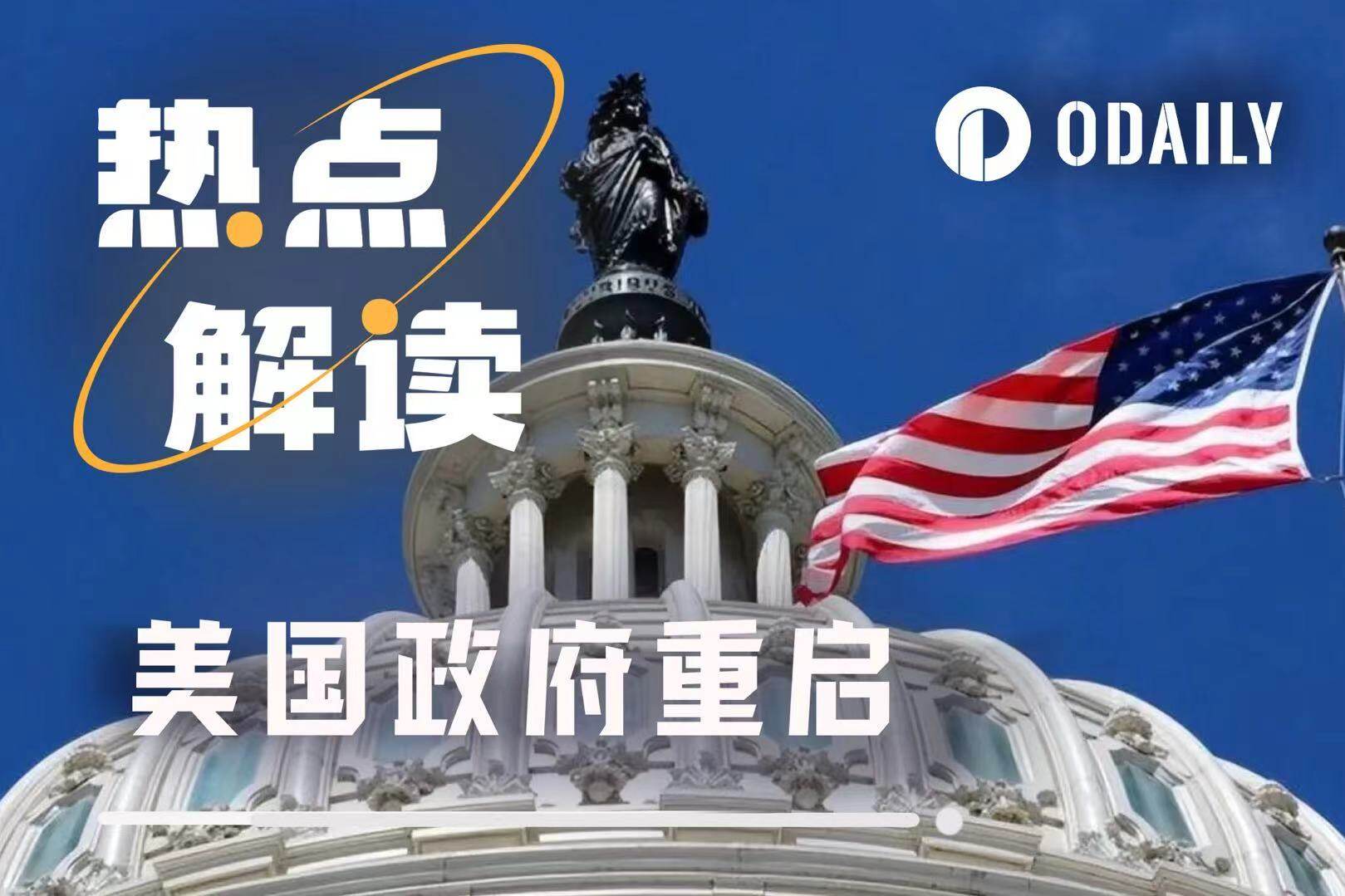With Powell's election imminent, what will be the potential successor's stance on crypto?
Original author: Bernard, ChainCatcher

Powell "counts down", Trump lays out plans in advance
Federal Reserve Chairman Powell's term will officially end in May 2026. However, the Trump administration's planning has already begun—Trump and Treasury Secretary Bensoner are attempting to gain control of key voting rights on the Federal Reserve Board (FRB) by the first half of 2026. Currently, the Trump campaign has secured three seats, with Stephen Miran replacing Adriana Kugler. With Governor Lisa Cook facing resignation due to allegations of mortgage fraud, the Trump campaign is just one seat away from securing a majority on the seven-member board.
From the introduction of the "shadow chair" concept to the quiet allocation of seats on the Federal Reserve Board, the battle for control of the Federal Reserve is reshaping the future of cryptocurrencies. According to two major prediction platforms, Polymarket and Kalshi, several candidates open to cryptocurrencies are vying for this key position, and market expectations for the next Fed Chair are sharply divided: Kevin Hassett, Kevin Warsh, and Christopher Waller are the three most popular candidates, with significant odds leading. Other candidates, such as Bowman and Bessant, have odds of ≤1%. Notably, Musk also appears on Polymarket's odds list, currently ranking last.
Three popular candidates emerge
On September 5, Trump spoke to reporters in the Oval Office and confirmed Kevin Hassett (Director of the White House National Economic Council), Kevin Warsh (former Federal Reserve Governor), and Christopher Waller (current Federal Reserve Governor) as his "top three" final candidates to replace Powell.
1. Kevin Hassett: Prediction Market Leader
In the prediction markets, Kevin Hassett, current Director of the White House National Economic Council, leads with a 29% probability on Kalshi and an 8% probability on Polymarket. The 63-year-old economist holds a prominent position within the Trump camp. He served as Chairman of the Council of Economic Advisers from 2017 to 2019, was one of the key architects of the Tax Cuts and Jobs Act during Trump's first term, and provided economic policy advice to Trump during his 2024 presidential campaign.
Regarding his crypto stance, Hassett holds between $1 million and $5 million worth of Coinbase stock, according to financial disclosure documents filed in June. These shares are compensation for his work as a Coinbase consultant. His total assets are at least $7.6 million, including speaking fees from institutions such as Goldman Sachs and Citigroup.
Hassett is a typical dovish on monetary policy. He has repeatedly criticized Powell's decision to maintain high interest rates, arguing that the Fed should be more aggressive in lowering rates to support economic growth. Trump repeatedly praised Hassett on CNBC's "Squawk Box" in August, identifying "Kevins" (Hassett and Warsh) as top candidates for Fed chairman.
2. Kevin Warsh: Estée Lauder's son-in-law
Kevin Warsh, with a 19% probability for Kalshi and 13% for Polymarket, came in second. His background is a perfect blend of Wall Street and Washington. In 2006, at the age of 35, Warsh was appointed to the Federal Reserve Board by then-President George W. Bush, becoming the youngest governor in the Fed's history. During the 2008 financial crisis, he served as a key liaison between the Fed and Wall Street, coordinating the sale of Bear Stearns to JPMorgan Chase and participating in the decision-making process leading to the collapse of Lehman Brothers.
Walsh's personal background is equally noteworthy. His wife, Jane Lauder, is the heiress to the Estée Lauder cosmetics empire, with a net worth exceeding $2 billion. His father-in-law, Ronald Lauder, is not only a longtime friend and former financial backer of Trump, but was also the one who first proposed the idea of the United States purchasing Greenland during Trump's first term. His extensive network of political and business connections gives Walsh unique influence in Washington.
Warsh has demonstrated a pragmatic yet cautious stance on cryptocurrencies. He previously invested as an angel investor in the algorithmic stablecoin project Basis and the crypto index fund manager Bitwise. In a 2021 interview with CNBC, Warsh stated, "In the current environment of significant monetary policy shifts, Bitcoin makes sense as part of a portfolio. It's gaining new life as an alternative currency. If you're under 40, Bitcoin is your new gold." He also noted that part of Bitcoin's rise stems from a "bid shift" from gold, noting that Bitcoin's price volatility severely undermines its role as a reliable unit of account or effective means of payment. Furthermore, in a 2022 Wall Street Journal op-ed, Warsh supported the issuance of a US central bank digital currency (CBDC) to counter China's digital yuan. This stance sparked criticism from the crypto community, who argued it could threaten decentralization.
3. Christopher Waller: A staunch supporter of stablecoins
Current Federal Reserve Governor Christopher Waller ranked third, with Kalshi at 17% and Polymarket at 14%. He may be the most positive current Fed official on cryptocurrencies. Waller has served as a Fed Governor since 2020 and previously served as Director of Research at the Federal Reserve Bank of St. Louis. He is a leading expert in monetary economics.
Waller's support for stablecoins is particularly noteworthy. At the Wyoming Blockchain Symposium in August, he described the transformation of payment systems as a "technology-driven revolution" and explicitly stated that "stablecoins have the potential to maintain and expand the international role of the US dollar." He believes that stablecoins, with their 24/7 availability, near-instant settlement speed, and unrestricted liquidity, have become particularly useful financial tools, especially in inflationary economies or regions with limited banking services.
Waller believes that stablecoins actually strengthen, rather than weaken, the dollar's global position. In a speech at "A Very Stable Conference" in February of this year, he likened stablecoins to "synthetic dollars," complementing Bitcoin's "digital gold." He also praised the recently passed GENIUS Act, arguing that it represents a significant milestone in US digital asset regulation and provides a foundation for the responsible expansion of stablecoins. Waller insists that innovation should primarily come from the private sector and opposes the Federal Reserve issuing a CBDC.
Other potential candidates
4. Michelle Bowman: A reformer from within
Despite only a 1% probability in the prediction market, Michelle Bowman, the current Vice Chairman for Bank Supervision at the Federal Reserve, should not be ignored. As a member of the Federal Reserve Board nominated directly by Trump in 2018, she was promoted to Vice Chairman for Bank Supervision in May of this year and has a key say in the development of stablecoin regulations.
Bowman has demonstrated an open attitude toward cryptocurrencies. In an August speech, she argued that banks should support the digital asset movement and that the Federal Reserve should provide rules that don't hinder the industry's development. She emphasized that "regulators must recognize the unique characteristics of these new assets and distinguish them from traditional financial instruments or banking products." She even suggested that Federal Reserve employees should be allowed to hold small amounts of crypto assets in order to "develop a working understanding of the underlying functionality."
Bowman believes that tokenization can speed up the transfer of ownership, reduce costs, and mitigate "well-known risks," and that stablecoins "will become a fixture of the financial system." She criticizes "overly cautious attitudes" and advocates for a "pragmatic, transparent, and tailored" regulatory framework. At the September 2024 FOMC meeting, she voted against a significant 50 basis point rate cut in favor of a more modest 25 basis point reduction, a stance of independence that earned her the admiration of Trump.
5. Scott Bessent: The current Treasury Secretary, Bessent explicitly stated in a July speech that "cryptocurrencies are not a threat to the dollar, and stablecoins can actually strengthen the dollar's hegemony." While he explicitly stated he would not use fiscal funds to purchase Bitcoin, he did support using government-confiscated crypto assets to build reserves, currently valued at approximately $15-20 billion.
6. Judy Shelton: Economist, Shelton's views may be the most revolutionary. A staunch advocate of the gold standard, Shelton has long criticized the Federal Reserve's excessive power, even comparing it to the Soviet Union's centrally planned economy. She believes the Fed's 2% inflation target is a disguised deprivation of public wealth. Shelton sees a connection between the gold standard and cryptocurrency, once saying, "I like the idea of a gold standard currency, and it could even be implemented in cryptocurrency."
7. Roger W. Ferguson Jr.: Former Vice Chairman of the Federal Reserve, he represents the voice of the traditional financial establishment. Ferguson led the Fed's initial response to the 9/11 attacks, ensuring the normal operation of the US financial system. While Ferguson has not publicly expressed a clear position on cryptocurrencies, he has emphasized the importance of maintaining the independence of the Federal Reserve and warned that political interference could undermine US economic leadership.
8. Arthur Laffer: The father of supply-side economics, creator of the famous "Laffer Curve" and one of the designers of Reaganomics. Laffer sees Bitcoin as a "private rules-based money" similar to the gold standard, which can promote global monetary progress and is consistent with the supply-side concept (reducing government intervention and promoting growth).
9. Larry Kudlow: Former Director of the White House National Economic Council, he has a relatively cautious but gradually open-minded attitude toward cryptocurrencies. In 2019, Kudlow's criticism of Bitcoin was considered by the crypto community as "the best argument for why we need Bitcoin." However, by 2022, he began warning on Fox Business Channel's show that "radical progressives will try to regulate digital currencies," opposing excessive regulation of cryptocurrencies.
10. Ron Paul: A former Texas congressman, he enjoys immense popularity among libertarians and the Bitcoin community. Paul, who began his career as a critic of the Federal Reserve, has gradually become a staunch Bitcoin supporter. He has declared that the only way to avoid a Fed-induced recession is to encourage people to use alternative currencies like Bitcoin and exempt cryptocurrencies from capital gains tax.
11. Chamath Palihapitiya: Billionaire, venture capitalist, and one of Silicon Valley's most influential Bitcoin advocates. Palihapitiya once held a significant amount of Bitcoin, and although he later regretted selling $3-4 billion worth, he remains a staunch supporter of the cryptocurrency. He has proposed that the government could use its Bitcoin holdings to launch a US sovereign wealth fund, raising $50-100 billion by lending rather than selling Bitcoin.
12. Howard Lutnick: Current Secretary of Commerce and CEO of Cantor Fitzgerald. Lutnick's company is the primary custodian of Tether (the issuer of USDT), holding tens of billions of dollars in U.S. Treasury bonds backing USDT. His son, Brandon Lutnick, also partnered with SoftBank, Tether, and Bitfinex this year to establish a $3 billion Bitcoin investment fund.
While these candidates face low odds in the prediction markets, their differing approaches to cryptocurrencies reflect the diverse understanding of digital assets among US policymakers. From Bessant's vision of a "crypto superpower" to Paul's philosophy of monetary freedom, from Lutnick's business practices to Laffer's theoretical underpinnings, each perspective offers unique insights into the Fed's potential future direction for crypto policy. With personnel changes, loosening policies, and a softening of stances, the Fed, an institution that once teetered on the edge of the crypto market, is now renewing its dialogue with the industry.
Market expectations: Is the era of massive money printing coming?
In an interview with Kyle Chasse, Galaxy Digital CEO Mike Novogratz explicitly stated, "The next Federal Reserve Chair could be the biggest bull catalyst for Bitcoin and the entire cryptocurrency space." Novogratz predicted that if Trump appoints an "extremely dovish" Fed Chair who slashes interest rates when they shouldn't, Bitcoin could reach $200,000. BitMEX founder Arthur Hayes, in his latest article, "Four, Seven," even predicted a whopping $3.4 million price for Bitcoin. He predicted that if the Trump administration implemented yield curve control (YCC) by controlling the Federal Reserve, it could create as much as $15.2 trillion in credit. Based on the historical correlation of "for every $1 of credit created, Bitcoin rises $0.19," this would put Bitcoin at $3.4 million.
However, Novogratz also warned that this scenario would be "really bad for the United States." He argued that while this aggressive monetary policy would be positive for cryptocurrencies, it would come at the cost of the Federal Reserve's independence and severe damage to the US economy. Hayes also believed that the Fed would be forced to purchase large amounts of long-term Treasury bonds to lower interest rates, giving regional banks more room to lend to support small and medium-sized enterprises, and the scale of liquidity injections would far exceed that during the 2020 pandemic. This "poor man's quantitative easing 4.0" policy would shift the power of credit creation from Wall Street to small and medium-sized banks on Main Street.
Conclusion: Waiting for the shoe to drop
As Novogratz noted, the "political landscape" makes predicting Bitcoin's cycle tops more difficult than ever. Federal Reserve personnel changes have always been more than just a bureaucratic procedure; they've become a catalyst for reshaping the entire crypto landscape. From the SEC's softening stance to the FDIC's loosening of restrictions, from the approval of Bitcoin ETFs to the advancement of stablecoin legislation, each loosening of the regulatory environment paves the way for this impending shift in monetary policy.
Polymarket data shows a 44% probability that Trump will not announce the next Federal Reserve Chair this year, meaning the market may have to wait several months for a clear direction. However, judging by the backgrounds of the current leading candidates, regardless of who ultimately takes the helm, they generally demonstrate a greater openness to financial innovation. This shift is not accidental; an irreversible trend has already taken shape: with BlackRock managing the largest Bitcoin ETF, a Federal Reserve governor openly supporting stablecoins, and the Treasury Secretary stating that "cryptocurrencies are not a threat to the dollar," the highest echelons of traditional finance have opened their doors to digital assets, signaling the advent of a more cryptocurrency-friendly regulatory era. For the crypto industry, whoever ultimately takes the helm needs to prepare for the potential "flooding era."
- 核心观点:美联储人事变动将重塑加密货币政策。
- 关键要素:
- 特朗普布局掌控美联储七席理事会。
- 三大热门候选人均对加密货币开放。
- 预测市场显示鸽派政策预期强烈。
- 市场影响:可能推动加密货币进入大牛市。
- 时效性标注:中期影响。



